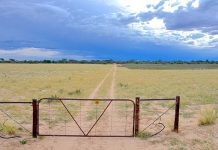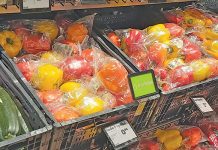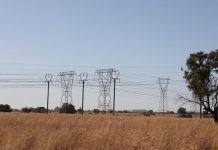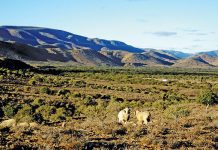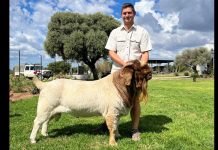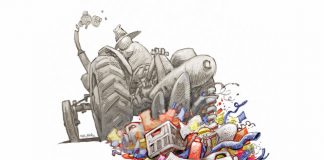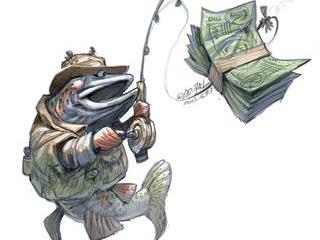
In early 2014, South Africa’s trout farming and recreational fishing sectors were faced with a set of NEMBA (National Environmental Management: Biodiversity Act, 2004) regulations that aimed to declare trout as invasive aliens. The regulation, drafted by the Department of Environmental Affairs (DEA), threatened the future of these sectors. Since then, under the banner of Trout SA, major strides have been made towards ensuring that the SA trout farming and recreational fishing sectors do not face prohibitions. However, the trout value chain is still under threat.
Late last year, government announced that Operation Phakisa, aimed at addressing critical issues in the National Development Plan, would focus on giving freshwater aquaculture an important role in socioeconomic development.
Recreational trout fishing already contributes significantly to the country’s economy. Since about 1994, the Federation of South African Flyfishers (FOSAF) has developed a series of principles, guidelines and policies aimed at sustainable environmental management, and at ensuring that flyfishing remains a valuable contributor to the economy.
FOSAF has also made an effort to show that it is not focused purely on trout. Rather, the federation encompasses the indigenous yellowfish working group and evaluates the fisheries in various streams and dams, among other activities. FOSAF and its partners have a vision for the future, and contributing to development in South Africa, and protecting and promoting the country’s trout industry, are part of this vision.
Given the current threat to the industry, it is important that FOSAF situate itself within the commodity framework of the Department of Agriculture, Forestry and Fisheries (DAFF). The trout industry sees itself as a commodity group because it has a real value chain with a real socioeconomic value to the country –hence the formation of Trout SA, which will be accredited by DAFF.
Where to from here?
DAFF is the trout industry’s ‘big brother’, and must foster, protect and help grow its investments and contributions. In particular, DAFF can help the value chain in its struggle against the threat currently posed by the DEA. The DEA’s launch of Operation Phakisa came as a surprise, and has given the trout industry the leverage it needs to mobilise support for itself. Now, it is important that the message is spread: South Africa must engage with its potential markets for aquaculture products.
The same is true for the tourism and hospitality industries. These and other stakeholders in the national trout value chain must be brought on board to grow the industry. There have been concerted efforts by the DEA to divide the trout industry in an attempt to conquer it. This has been a stumbling block, and stakeholders must not let this happen. If the industry is to survive, grow and make a meaningful contribution to South Africa socioeconomically, all must be united.
In keeping with the goals of Operation Phakisa, the trout industry has reached a settlement with the DEA: trout already occurring in South Africa will not be declared invasive. Applications to have trout introduced into ‘non-trout’ areas will require risk assessments, which the DEA will use to approve or deny applications. NEMBA now requires a balancing act. The potential environmental threats posed by trout in any area must be compared with the potential, or existing, socioeconomic benefits that trout can, or are, generating in an area.
Conflicting maps
The benefits of a clear and formalised picture of the extent of trout populations in the country are obvious. A process of identifying all areas in South Africa where trout already occur, and then formally demarcating these areas, is underway. The trout industry has been supplying maps and information to the DEA. By February this year, the industry and the department were able to exchange and compare the trout distribution maps each had respectively compiled. Since then, however, the DEA has gone quiet.
Despite repeated attempts, I have been able to source only three new trout distribution maps. Two were sent from the South African National Biodiversity Institute (SANBI) to the provincial environmental affairs departments of the Western and Eastern Cape. The other was circulated in Mpumalanga by its Parks and Tourism Agency. These three maps are different to the ones we compiled and sent to the DEA, and different to the maps we had previously received from the DEA and provincial authorities.
The trout industry will soon hold a meeting to decide on what strategy to follow regarding these ‘differences’. I am worried that SANBI, as a facilitator of the mapping, is under pressure and is not being objective.
DEA Permits
Where trout already occur and would thus not be declared invasive, NEMBA still stipulates that restricted activities such as breeding and releasing trout in these areas require a DEA permit. The trout industry took issue with this because the vast majority of other agriculturally important – and alien – species in South Africa, such as maize and imported livestock genetics, had already been exempted from requiring permits.
To try to obtain exemption, the trout industry went through the legislation. We discovered that the DEA minister, Edna Molewa, could, at her discretion, exempt certain activities utilising alien species from requiring permits. Operation Phakisa allows for South Africa’s trout value chain to create a self-regulatory framework as part of the conditions for which trout could become exempt from requiring the relevant permits. The framework will require a secure database, to be hosted by DAFF, of all trout production facilities and the areas where trout are allowed to be released.
Trout producers and live trout buyers will have to record any transactions on this database. The areas where live trout are being stocked will also have to be recorded. Data from these transactions will be used as proof of the legality of transporting and stocking the live trout. The system will be subject to auditing on a regular basis to ensure compliance with the terms of the DEA minister’s exemption.
Bad faith
In November last year, we sent a draft of the regulatory framework to the DEA, but have not heard anything back. Recently, the SANBI facilitators told us that, despite taking so long to deal with the matter, the DEA says it is under pressure to amend the existing NEMBA regulations, and by extension, publish the trout regulations and maps for public comment. If this is so, it seems the DEA is intent on pressing ahead without finalising the agreed consensus-based mapping process and will use the maps it thinks are suitable. This is contrary to our agreements.
The DEA says our concerns can be considered as part of the public consultation process, but once those maps go public, there is little hope of changing them in the short term. We see this as unreasonable and a breach of the agreements discussed, and have written to the DEA through SANBI, stating this directly. The only way forward is for the industry
to unite and meet again with the DEA to address the remaining issues.
Adapted from a speech by Ilan Lax, chairperson of the Federation of SA Flyfishers, at Trout SA’s 2015 AGM.
Phone 082 324 4822 or email at [email protected].

